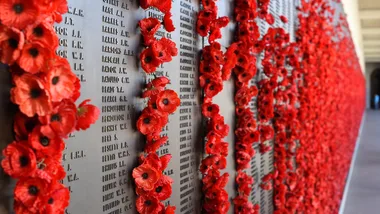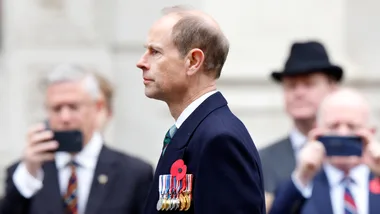As dawn broke over Melbourne’s Shrine of Remembrance on Anzac Day, 2018, war veterans gathered along St Kilda Road readying themselves for the annual march, their enthusiastic camaraderie warming the crisp, solemn autumn air. Among these service people who had served our nation with valour was Jessie Flanders, who at 97 was marching in the Melbourne service for the very first time.
On Jessie’s lapel, almost outshining her proud smile, was a precious gold pin. One she’d received from the then-UK Prime Minister David Cameron. The former Women’s Royal Australian Navy officer had been taken by surprise when the little package, postmarked from England, that had arrived seven years earlier.
“I wondered who on earth would be sending me something all the way from Britain,” she said.
Accompanying the pin was a certificate which read: ‘Deepest gratitude on behalf of the British Government for the vital service performed during World War II’.
It was the first time that her role in the war effort had ever been formally acknowledged. And it was a signal that Jessie could at last share the very big secret she’d held dear for decades.
Mum, you were a spy!
Jessie’s friends and family believed she had worked in a secretarial role for the Navy during the war. In fact, Jessie was a spy and she played a pivotal role in helping the Allies win World War II.
“We were absolutely sworn to secrecy and told that we mustn’t tell anyone, not even our parents, what we were doing. So, I did what I was told and I kept my lips sealed,” she told The Weekly, when we met in her hometown of Casterton, Victoria, back in 2019. “My mother and father died not knowing what I’d done during the war. Even my late husband didn’t know and I’m a little bit sad about that, but that’s how it was. We were sworn to secrecy, and I kept my word.”
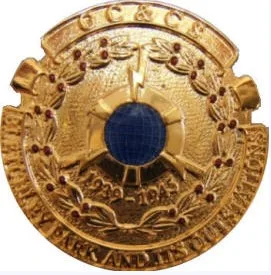
It was only in the last years of her life that the story of Jessie Flanders and the remarkable women of the top-secret Special Intelligence Bureau began to emerge. Belatedly, they could speak proudly of their work during the war and march proudly on Anzac Day.
From a secret Melbourne base, code-named ‘Monterey’, an outstation of the famous Bletchley Park operation in England, Jessie and a team of highly skilled women secretly intercepted the radio instructions of Japanese commanders. They decoded them and relayed the enemy battle plans to Allied command. They are credited with saving the lives of hundreds of Australian sailors.
“When I felt it was okay to talk about it, I told my children and they said, ‘Mum, you were a spy!’ Thankfully, they were impressed and not horrified!”
Melbourne at war
Jessie Flanders (née Edgar) was 18 years old when Hitler invaded Poland and the world went to war. She was in her last term of boarding school in Melbourne, and she wanted to help out. Jessie begged her parents to allow her to stay in the city and get a job rather than returning to the family farm near the tiny township of Harrow in far western Victoria.
They agreed on the condition that her sister live with her. Armed with a sense of false bravado and determination not to return to the farm, the two country girls marched into the offices of the Shell corporation and secured clerical jobs. They were among the first women employed by Shell in Australia.
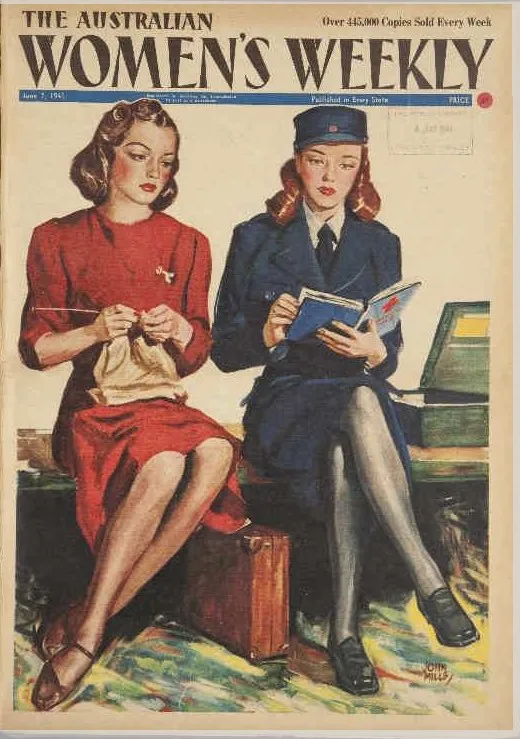
The Shell building happened to be next door to The Blue Triangle servicemen’s club. So, during her lunch hour and after work, Jessie and her colleagues would visit the soldiers and volunteer their time serving meals or playing cards with the troops.
At the time, the impact of war was beginning to be felt at home, and Melbourne was vulnerable to attack.
The government enforced nightly brownouts. Every home hung thick black curtains to block light that might attract Japanese bombers. Trenches were dug through the pristine parks and gardens. And any buildings that had solid basements had to turn their underground space into air raid shelters. Streetlights were dimmed. Cars drove with hooded lights so they couldn’t be seen. And search lights were used to detect enemy aircraft.
Joining the Navy
War had well and truly arrived in Melbourne, and the mood on the street was tense.
“It was terribly frightening,” Jessie said, “I felt a little bit helpless at Shell. I wanted to do more to assist the war effort.”
Jessie, encouraged by the soldiers she’d been helping, decided to join the Navy.
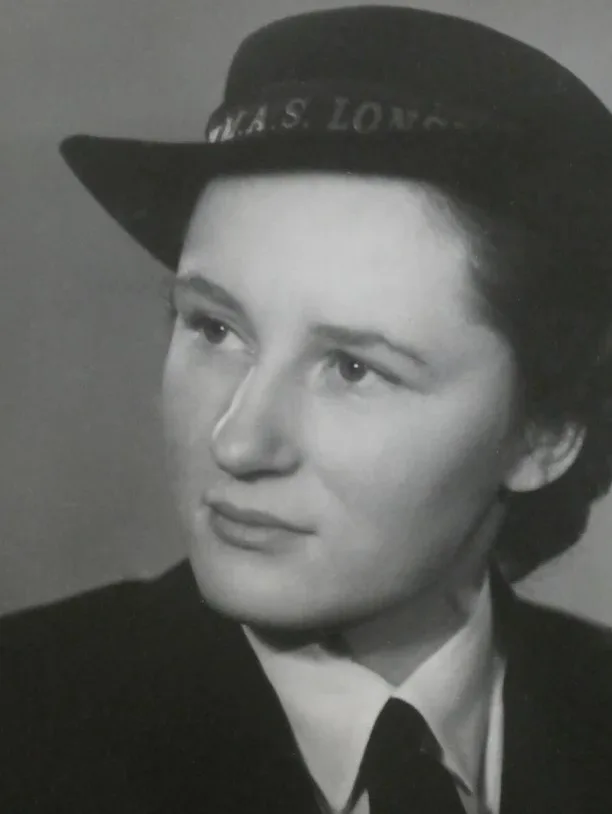
“My friend Mary and I signed up and were sent to Point Lonsdale base for training. After two weeks, we got uniforms and vaccinations, and we were told we were being posted to Monterey. Of course, we had no idea what that was or what we would be doing, we just did what we were told. We volunteered to go anywhere, we didn’t mind. Sadly, women weren’t allowed to travel overseas then, but we were prepared to go anywhere we were needed.”
The women who cracked codes
They found themselves close to home in a block of flats in Queens Road, St Kilda. On the outside it looked like a regular apartment building. However, the apartments had been converted by American forces into a series of secret decoding rooms.
The only hint that something was going on was the armed American guards checking identifications as people came and went for their shifts. They worked around the clock in small teams intercepting messages between the Japanese command. They would translate the messages from Japanese and decode them, then alert Allied command as to the Japanese plans.
Jessie became familiar with the Japanese language, particularly as it related to the military.
“If a convoy was going to be attacked or a place was going to be bombed, we could alert the precise division so they could change course or amend their plans,” she said. “Now that I’m telling the story, I realise how significant it was. But at the time, none of us understood it. We were too busy cracking codes. I now know that we saved a lot of lives.”
Top secret assignment
The Monterey Unit operated between 1942 and October 1944. It is now widely credited with playing a significant role in the Allied victories in the Pacific.
Monterey assisted in the Battle of Midway in 1942, the destruction of a Japanese convoy of more than 5000 army reinforcements and the death of Japanese Admiral Yamamoto. This event proved a devastating blow to Japanese morale. Almost all of the 80-strong team who worked in rotating shifts at Monterey were women.
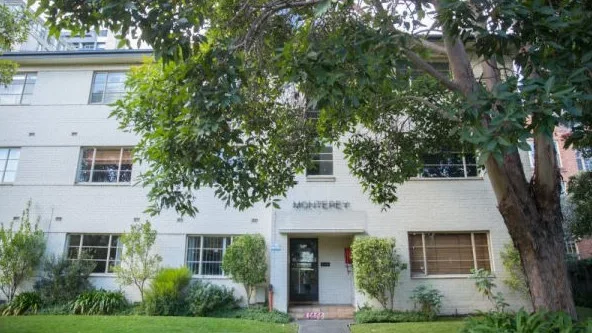
“On our very first day there, we had to swear on the Bible we wouldn’t tell another soul what we were doing,” she shared. “Not our families, no one, ever. We wondered what it was all about at first. But we pretty quickly realised that what we were doing was important.
“It was quite a buzz when you intercepted something you knew was important,” she continued. “We’d rush the message to command who would fully decipher it and work out what was going on. We knew the importance of time. If we missed an important code, sailors could die.”
Saving sailors’ lives
“I distinctly recall one night when I deciphered a code which said ‘attack’,” she remembered. “I ran as fast as I could into the command office and told them the Japanese were going to attack an allied convoy sailing up the east coast of Borneo. The message was instructing the Japanese ships where to rendezvous and at what time so they could attack our ships, but we managed to alert our officers, and they changed course in time. We felt very happy about that – we definitely saved lives that night and it felt really good to have contributed to something so significant.”
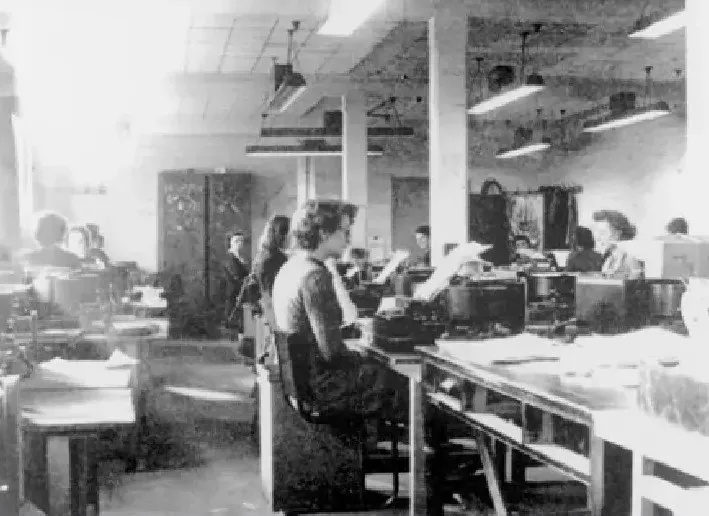
Jessie remembered the day peace was declared as if it were yesterday. She was working the evening shift at Monterey when word came through that a treaty had been reached.
“Oh, the celebration, it was marvellous,” she told The Weekly. “The streets went wild, but I was at work, so I missed most of it, and when I finished my shift, the guards escorted me home. It was wonderful, but it also meant we were out of a job. Monterey was shut down very quickly, and that was it. We were discharged from the Navy.”
Life and love after war
After three years in the Navy, Jessie went back to the farm for a break. She was intending to have some time off and then return to Melbourne to find a new job. But in the meantime, she fell for the charms of a returned fighter pilot, Bob Patterson, and the pair married.
They made their home at Warrock Homestead. The couple built the farm into a thriving sheep station, one of the most revered in Victoria. Jessie and Bob had three children, Robert, Richard and Annie. They lived happily on the farm until Bob died in 1975, aged just 54.
Jessie never revealed to Bob what her role in the war had been. It was only decades later that she began to share her extraordinary history with a select few family members.
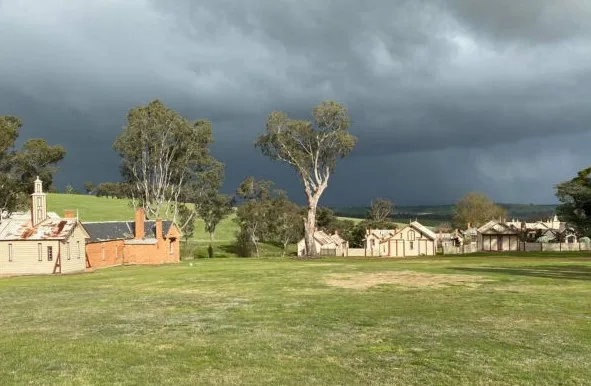
“When we were growing up in the 1950s, everyone around us had their war stories,” recalls Jessie’s son Richard. “When we asked Mum what she did in the war, she would reply, ‘I was just a driver in the navy’. Only many years later did we discover that her role was a significant one and one that seemed quite unbelievable. She has many skills and one of her greatest is maths. It is wonderful that she was able to use this in the decoding work she did at Monterey, but it’s a shame that she was unable to share her experiences with anyone. She is certainly very good at keeping secrets!’”
After Bob’s death, Jessie moved into nearby Casterton which has been home ever since. She married family friend, John Flanders, and they lived happily together until his death in 2000.
A call for recognition on Anzac Day
Jessie remained actively involved in the community until the end of her life and was a treasured resident of the tiny Casterton township. Anzac Day was always important to her, and her name is also inscribed on the Harrow War Memorial as a living hero.
Despite local community recognition and the thanks of the British Government, Jessie and her Monterey colleagues have never been formally recognised by any Australian authorities for their role in the war.
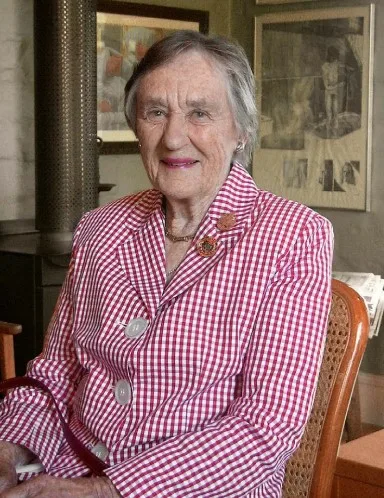
“The British pin was wonderful and I am very honoured but this was sent out fifty years after the war and sadly now many of the women I served alongside have passed away, which is a great shame, that they never received the credit they deserved. It would be nice for those women to be recognised.”
The Australian Women’s Weekly has contacted the Department of Veterans Affairs on Jessie’s behalf to see if this can be rectified.
“I think the stories of women in war are really only beginning to surface,” Jessie said, “and I do feel it’s important that we keep the stories alive and honour the women who are no longer here. I’ll do whatever I can, while ever I can. War is terrible and we must always remember that.”
Jessie’s last Anzac Day march
In 2019, Jessie Flanders – formerly known as RANS EJ Edgar 2158, Leading Writer – celebrated her 98th birthday by again marching on Anzac Day in the Melbourne Dawn Service with granddaughters Emma, 34 and Samantha 31.
On 14th August 2020, around 18 months after she spoke with The Weekly, Jessie passed away peacefully in her sleep. She was 99.
This article originally appeared in the April 2019 issue of The Australian Women’s Weekly. Subscribe so you never miss an issue.

